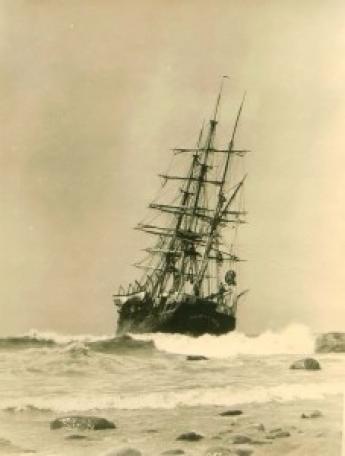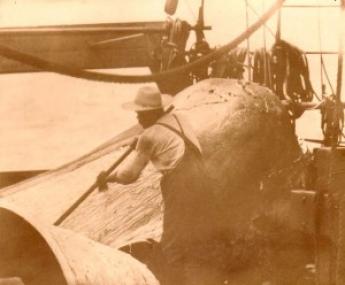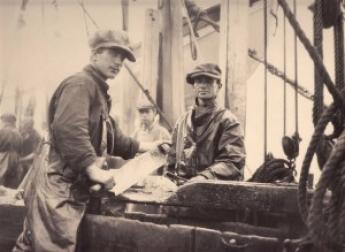Antiquarian Booksellers' Association of America Ten Pound Island Book Company
Collecting Photography - A Thousand Wordsâ¦

By Greg Gibson
In 1977 my business partner Jean, something of a counterculture person, and sister-in-law of the great poet Charles Olson, got us into the house of a recently deceased artiste over on Rocky Neck. Of course the old boy’s relatives, who disapproved of his swishy ways and never had time for him when he was alive, swooped in and cleaned everything of value from the house. Books, having no value, were left in a pile on the floor of the Great Room.
I removed several carloads of books and magazines from that house and somehow, over the summer, they disappeared. That summer of 1977, my second year in the trade, was marked by an odd phenomenon. Several times a month people would come in, poke around, and ask if I had any magazines. I’d direct them to the boxes of magazines and they’d say, “No, I mean magazine with pictures” or, “I’m really looking for older magazines. Do you have any tucked away?” From this I inferred that magazines were coming on strong. I started buying magazines at yard sales, but apparently they were always the wrong ones. Certainly they were not the ones my magazine buyers were seeking.
That winter, or maybe it was the winter after, I was sitting at the Gloucester train station (What I was doing there is a mystery, since I never rode on the train. Actually, I might have been sitting in the bar across the street, in front of the window that faced the train station.) reading my AB Bookman’s Weekly when the scales fell from my eyes and I saw, for the first time, what the future was. That week’s AB Magazine was devoted entirely to photography and, like Paul on the road to Damascus, I saw the light. Photography will be the next big thing!
I’d been a photographer when I was a kid. I had a pretty good eye and was familiar with the mysteries of the darkroom, and in hardly any time at all I had assembled, for research, the beginnings of a wonderful wall full of photography books. But it wasn’t until I saw the reproductions of the covers of some issues of Stieglitz’s famous Camera Work that I realized the old queen from Rocky Neck must have assembled a collection of them and I, unwittingly, put them out in the magazine box – whether all at once or slowly over the course of that summer, I’ll never know – where they sold for a dollar apiece. They’d sell for three or four thousand times that today.
This episode came to mind recently, because my mentor Louie Howland and I had just purchased thousands and thousands of photographs – vintage and copy prints – of whaleships, whalemen, and whaling. Uncle Louie did the rough sort and pricing, then I began the labor of cataloging them. In no time I was drawn into the nasty, dark, dirty world of whaling – a foul place and an exploitative industry that our literature has somehow managed to romanticize. Mind you, many of these were great pictures, some anonymous vernaculars and occupationals, some taken by the likes of A.C. Church and Clifford Ashley. The documentation they provided was splendid, a very different kind of information than one could glean even from the greatest whaling books, from Yankee Whaler, say, or Moby Dick. I listed a few of them in Maritime List 231, which has just been posted on the Ten Pound Island website.
That got me thinking about the degree to which images have found their way into our culture. Neither of my kids, doubtless traumatized by having a bookseller for a father, is much of a reader, but both are splendidly visually literate. He’s a photographer and she’s a florist. Facebook, Instagram, Pinterest, and all that other stuff I don’t know how to work, is about images, not words. That’s how we communicate with one another these days. Even our book descriptions depend on images now. Rare is the catalog that is not lavishly illustrated, and if our online listings hope to have any chance of selling, they’d better feature plenty of images.
We’re in the cradle period of images and imaging. Some day soon images will be text, and text will be arcane. We will be practitioners of black arts.
***
Posted on Bookman’s Log, presented here by permission of the author. Pictures: Bookman’s Log.


